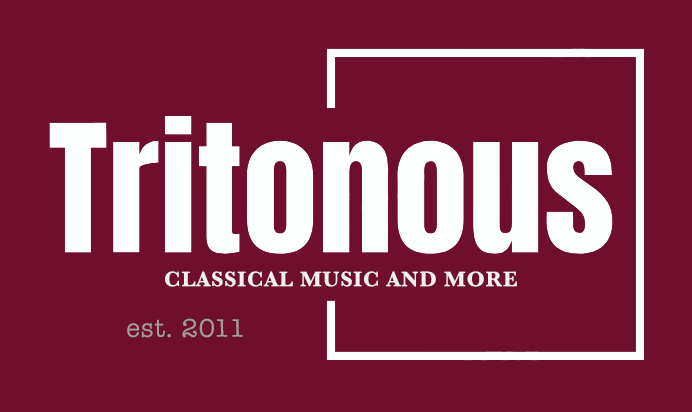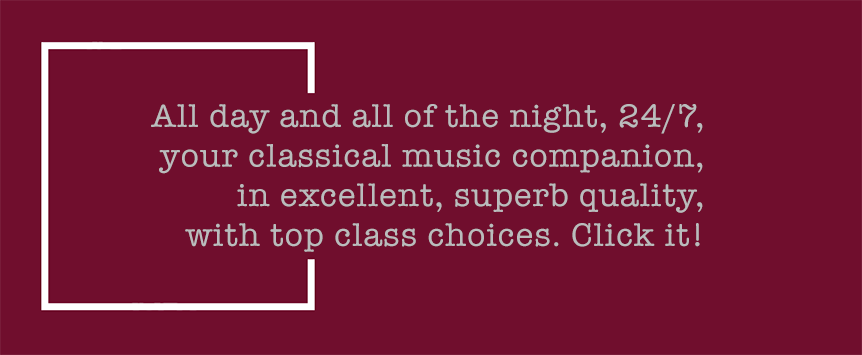I started with the Jolivet, easing myself into some contemporary music. This really is a beguiling piece (even if you don’t typically care for this composer) and Junnonen is lovely in it. In the opening Andante cantabile (and later in the Largo), his playing is beautifully singing and expressive, yet not weighed down with overindulgent emotion. And his tone is resplendent – clear, vibrant and radiant (just as it was in Mozart). The Resonus recording is seductive, revealing some positively luscious string sound in the Scherzando.
Sparks fly in the final Allegro risoluto, with crisp, buoyant virtuosity. Yet Junnonen brings such musical and meaningful purpose, I found myself thoroughly immersed in it all. And again I noted the glorious recording – presenting the musicians set back within a spacious, almost ethereal acoustic, with a glowing warmth to the sound. This has never been my favorite Jolivet composition for flute, but Junnonen very nearly convinces me otherwise. I don’t ever remember being so completely engrossed with the piece as I was listening to this recording of it.
Listening next to the Ibert, which comes first on the CD, Junnonen brings real freshness to this staple of the flute repertoire. Hearing him play it makes it sound new again. However, from the very opening measures, I was struck by the backward balance of the strings, which are very hard to hear – especially in their 16th-note passagework all through the movement. But we are again treated to Junnonen’s radiant sound, which is, as before, simply resplendent. His playing is spirited and lively, accompanied by characterful woodwind contributions and splendid brass interjections.
The Andante feels a little slow (almost Adagio), though no slower than many flutists play it. And Junnonen incorporates a hint of “whooey-ness” to his tone (but not too much), affording it a pensive simplicity which is most alluring.
The finale, then, takes off like a whirlwind – with enormous gusto from rollicking horns and crisply articulated triple-tonguing from the flute. This is surely the fastest I’ve ever heard this played – light and gossamer, yet at all times effortlessly under control. Never hectic or breathless, the scherzando element is fully conveyed with an effervescence which is simply irresistible at this tempo. Once heard, I don’t think I can ever accept it played any slower – although I may have to, as I suspect most flutists can’t play it this fast. (Most recordings of it clock in about 30+ seconds longer.) Junnonen plays the now expected higher staccato notes at the end (high C to an almost impossible F above it), bringing the piece to a thrilling conclusion. The performance is so good, I almost wish he had played this last on the program.
He instead concludes with another real showstopper, Rodrigo’s Concierto Pastoral. This has been one of my very favorite flute concertos ever since Galway’s dazzling 1978 RCA recording of it with the inestimable Eduardo Mata conducting the Philharmonia Orchestra. Moreover, the recorded sound was sensational. After it was finally published, a few brave flutists have subsequently recorded it – but surprisingly not that many. It’s extremely difficult to play and I imagine many flutists are reluctant to tackle it. And, seriously, can anyone really compare to Galway in this, his signature piece, which he commissioned from the composer?
And therein lies my quandary. I love the piece as Galway plays it and rarely does it satisfy in quite the same way as played by anyone else. However, after studying the published score, it must be acknowledged that Galway does take a few liberties with it – particularly with some of the dynamics and articulation, and especially the tempo in the Adagio, which is much slower than the metronome indication. He certainly made the piece his own (and there’s no denying his ravishing voluptuousness in the Adagio). I therefore admire flutists who don’t set out just to imitate Galway, but rather go back to its roots and discover new insights from the score itself.
I will summarily say that I enjoyed Junnonen’s recording. And it is different from Galway’s – less vigorous and a bit more rustic. It’s more, well, pastoral. And that seems to be perfectly appropriate, given the title. This observation may actually be attributed more to the orchestral contribution and the recorded balance than the flute playing – which I will get into below.
The opening meteoric, moto perpetuo display takes off at an animated, yet sensible tempo. But I soon began to wish for more energy and incisive articulation from the Helsinki Chamber Orchestra – especially the strings. (Right from the introduction of the main theme at ms 46, for example, the propulsive, chugging 8th-notes played by divisi violas are all but inaudible, as are the articulated cellos beneath them.) Compared to Mata on RCA, James Kahane (no relation to Jeffrey) is decidedly civilized and refined, and his orchestra sounds a bit small and lacking vigor. But overall, this is less of a bustling scramble of notes than often heard, and there is an attractive sophistication to the shape and scope of the movement as a whole.
The Adagio is quicker (and cooler) than usual – though I can’t quibble about it; it’s actually very close to the composer’s metronome mark. (Yes, I got out my dusty metronome and checked.) However, there is none of Galway’s mega rich vibrato here. Junnonen affords it a more plaintive simpleness, allowing a somewhat freer, more flowing naturalness which I liked very much – although this does provide less contrast with the central piu mosso section which follows. But as the dynamic marking increases in the Allegro moderato, I once again needed more articulation and involvement from the orchestral strings. And in the ff melodic passage just before the cadenza, the violins sound distinctly undernourished and thin, revealing a very limited number of players.
The finale launches into a true Rondo – gossamer and fleet, full of verve and charm. It’s not exuberant like Galway and Mata, and I continue to miss vitality from the orchestra. (Even the trumpet and horn calls sound a bit timid.) I get the impression that Kahane isn’t entirely comfortable in this music. But there is a delightful ease in the flute playing which is most appealing. And I found myself humming and whistling its many tunes for days after listening to it. I can hardly offer more praise than that.
This piece is extraordinarily difficult, exploiting the entire range of the instrument – from the low B (below middle C) to a multitude of high C#s and Ds at the very top. And the passagework often goes on for long stretches with nowhere to take a breath. Nevertheless, Junnonen’s flute playing is exceptional by any standards. And, yes it actually does sound difficult to play in places, lending a frisson of excitement and sense of spontaneity to his playing. Though Junnonen’s lower range is not as strong as Galway’s burly presence down there (likely aided by a close microphone), it’s refreshing to hear such a natural perspective from a recording without a hint of spotlighting of the soloist – exactly as one would experience it in the concert hall.
Despite minor reservations with the orchestra in the Rodrigo, this album is excellent – especially the Ibert, which really is dazzling.








